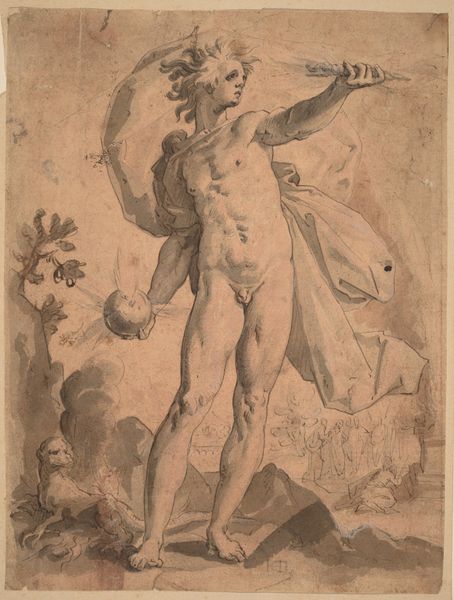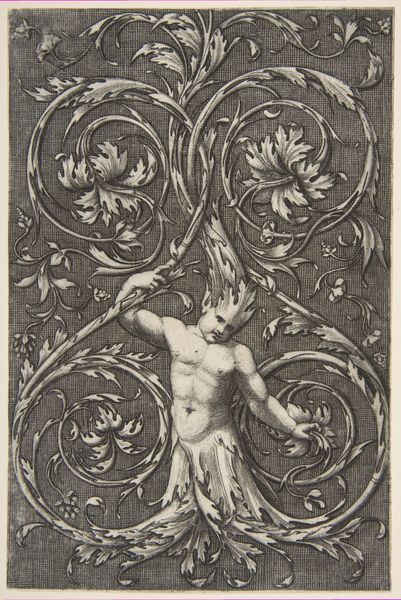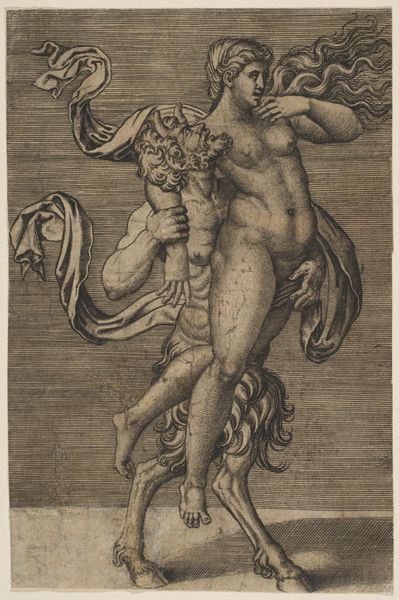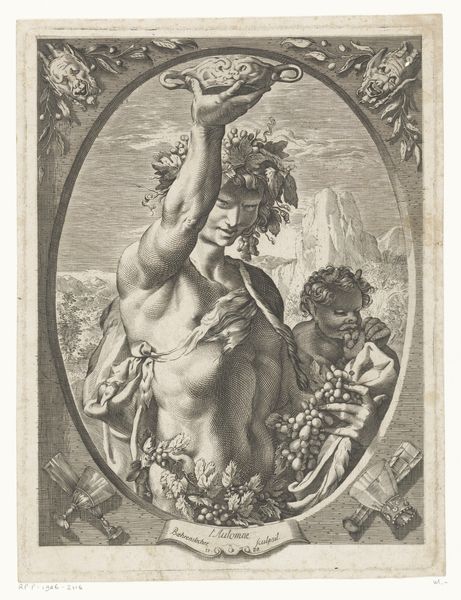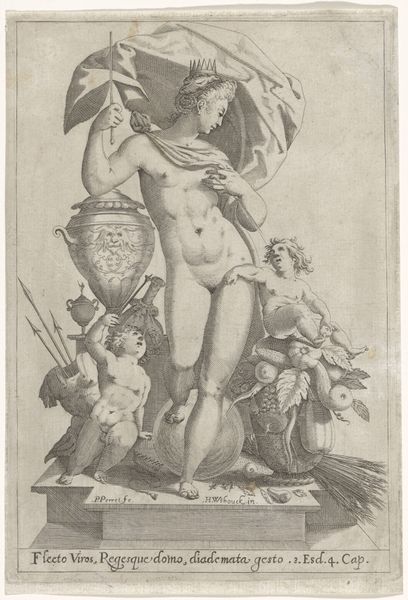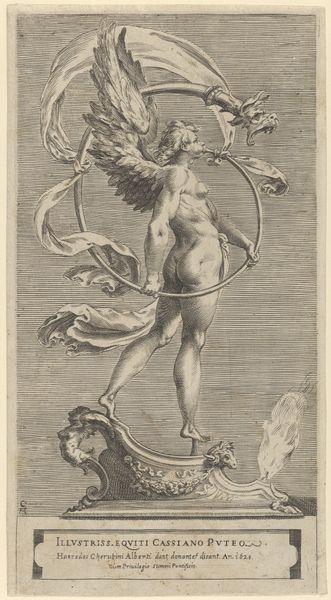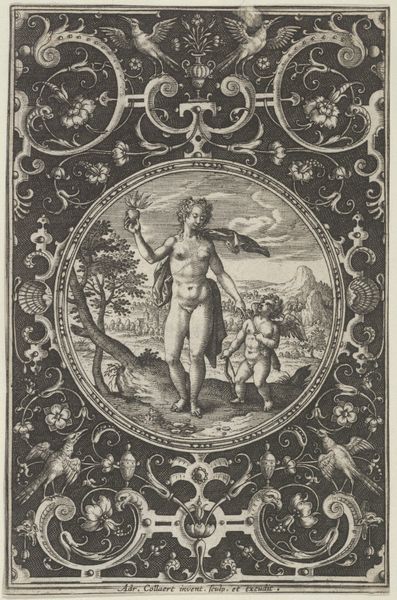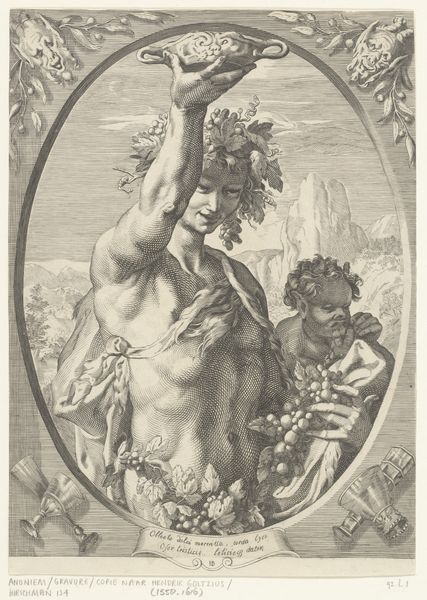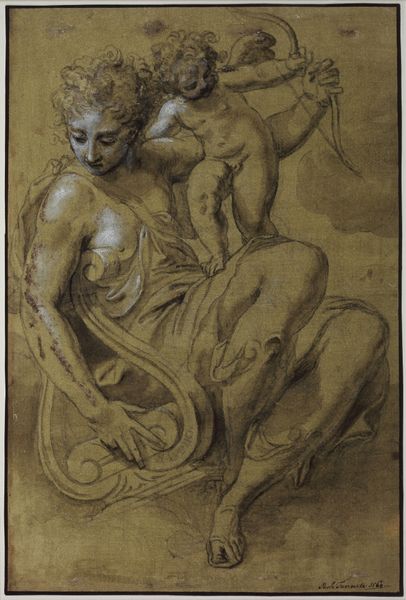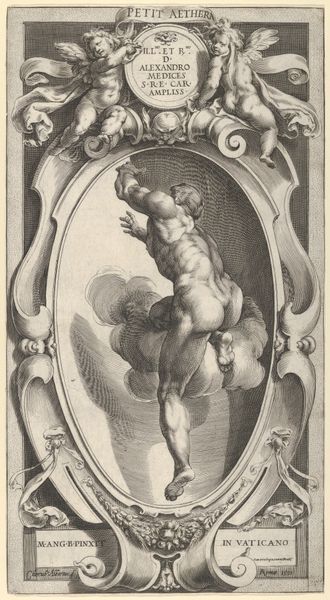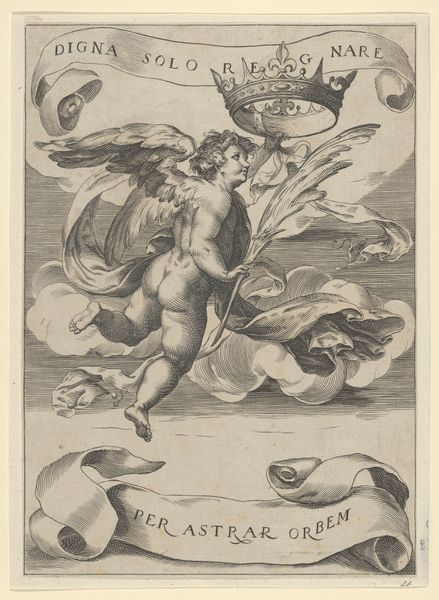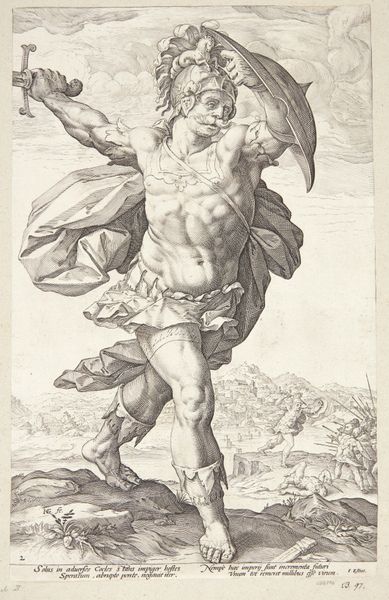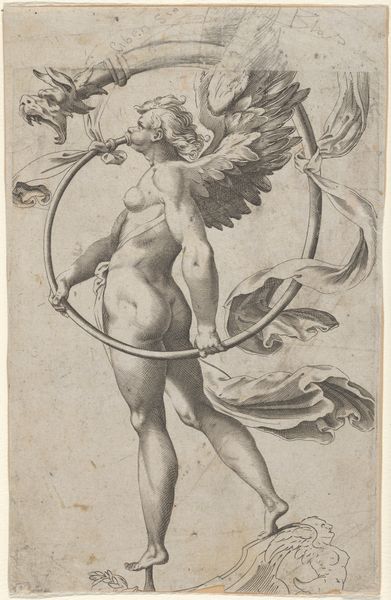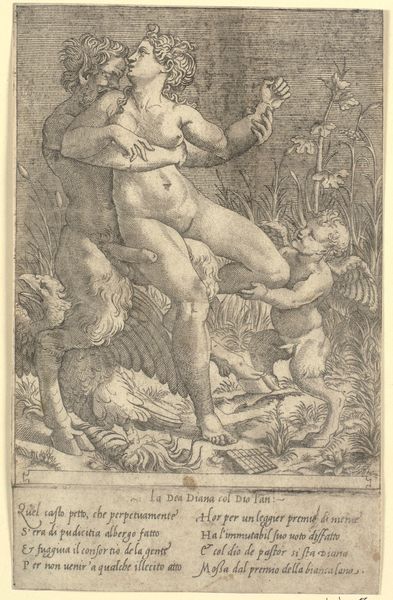
drawing, ink, indian-ink, chalk
#
drawing
#
toned paper
#
light pencil work
#
baroque
#
pencil sketch
#
possibly oil pastel
#
ink
#
coloured pencil
#
underpainting
#
indian-ink
#
pastel chalk drawing
#
13_16th-century
#
chalk
#
watercolour bleed
#
watercolour illustration
#
watercolor
Copyright: Public Domain
Curator: Well, isn't this drawing just the sweetest thing? We're looking at Jacopo Ligozzi's "Fliegender Engel mit Lorbeerzweig und Banderole" from around 1600. It's currently residing here at the Städel Museum. A little baroque cherub floating amongst us. What do you think? Editor: My first thought is, what kind of paper is this drawn on? It seems toned, almost like a commercially prepared ground. Is the choice of material significant, perhaps linked to the economic or aesthetic values of the time? Curator: Hmm, always with the materials, aren’t you? Jokes aside, the use of toned paper allows Ligozzi to create highlights with ease using chalk or white pencil, alongside the darker lines made by ink or charcoal. This effect heightens the angelic form's dynamism against the implied celestial background. It adds depth that seems otherworldly, almost magical. Editor: I'm equally curious about the production and distribution of such specialized drawing paper. How did it change artistic practice? Did the increased availability of toned paper democratize art-making to some extent? Curator: Fascinating questions! Focusing back on the art itself for a moment. Note the cherub holds a laurel branch. And the banner? "Victoria est donum Dei," Latin for "Victory is a gift from God." Ligozzi seems to suggest a direct divine influence upon earthly triumphs. He may well have been made with preparatory sketches of fabrics for embroidery and patterns in mind. Editor: Indeed, so what's implied is not just any "divine influence", but that of political, imperial ambition and domination in material reality—in cloth and design and the labor implied—made fashionable through artistic output of idealized propaganda? The commercial applications almost override the religious iconography. Curator: Ouch! Okay, but still, Ligozzi captures a very specific feeling—lightness, hope. I suppose there are several layers—both secular and spiritual, even propagandistic and heartfelt. And the sketch’s earthiness of materials against an otherwise divine subject is also touching, and complicated, as you say. Editor: Agreed! Seeing this through the lens of material culture and artistic intention illuminates the complexities inherent within ostensibly ‘spiritual’ or idealized representations. It enriches the experience beyond mere aesthetic appreciation, at least for me! Curator: And for me it’s deepened my personal connection. Perhaps victory really is the combination of artistry, divinity and very specific earthiness.
Comments
No comments
Be the first to comment and join the conversation on the ultimate creative platform.
